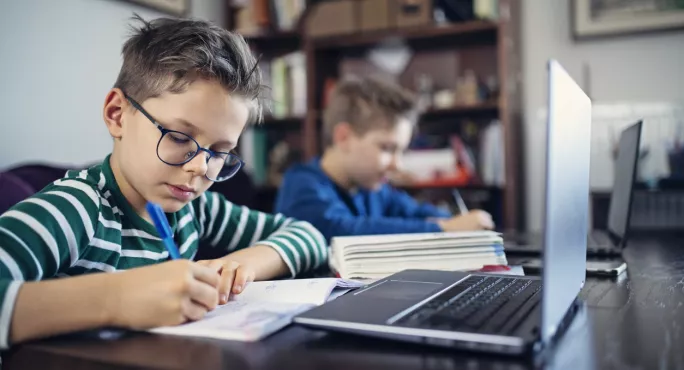I think I was about 17 when we got our first family computer. The luxury of Windows 95, the opportunity to play The Oregon Trail, a free Encarta Encyclopedia CD-ROM and the world was my oyster. At some point during my upper-sixth year, I also vaguely recall being taken to the ‘study centre’ where our A-level history group was introduced to “the Internet” - back in the days when, for some reason, it had a capital I.
I think it’s fair to say that such things were not quite an essential for education in the late 90s. It was a great joy to be able to submit my final project as a typed document - not least because of my dreadful handwriting - but it certainly wasn’t the expectation. Things have moved on somewhat in the intervening 20-odd years.
Recent events have served to highlight how much the internet and technology are part of our lives now. Imagine surviving endless social distancing, and sometimes periods of complete social isolation, without the ability to Skype with family, join Zoom meetings with school, and place orders for deliveries of essentials online. Although, of course, for some of the families our schools serve, there is no need to imagine - it is their reality.
As much as we might bemoan the fact that so many primary-aged pupils carry mobile phones to school, or that they are tied to their screens so often, the concerns are just as great at the other end of the spectrum, especially when trying to manage distance learning during a pandemic. As much as we might aim to set tasks that don’t rely on an internet connection, there’s no denying that having a functioning web-enabled device opens up a whole world of learning that is otherwise completely closed to some families.
Coronavirus: Internet access for disadvantaged pupils
For that reason, I must cautiously welcome the Department for Education’s proposals to offer connectivity to disadvantaged pupils, although, as ever, the devil will be in the detail. The official releases in the early hours of Sunday morning spoke of providing laptops, tablets and 4G routers to disadvantaged pupils, but the plan was couched carefully in vague terms.
First, it was the description that it would be for those “in the most vital stages of their education”. Now, in my own opinion, that would mean the early years, but I didn’t actually think that that was what the DfE had in mind. It became clearer that evening when education secretary Gavin Williamson suggested that this meant pupils in Year 10.
There’s also the offer of devices for those pupils who have a social worker. That’s great news for that small group, although I’m not persuaded that having a social worker is the greatest indicator of need. There are huge numbers of families, not in regular distress but working hard to get on with life in low-paid roles, or insecure jobs that make purchasing expensive devices and paying for broadband contracts a tall order. Where’s the help for them?
No doubt during this period of closure there will be many schools and teachers discovering levels of need in their communities that they never knew existed. Children who turn up to school regularly, well turned-out and clearly well cared for, might, nevertheless, be in dire need of support to access all the opportunities of online learning.
The government should be commended for taking action to tackle this vital area of need, but I fear that the scheme on offer will do little more than scratch the surface. There’s a bigger issue here that remains to be addressed, and will continue to need attention in the future. We could do with making a connection to the online world part of every child’s new normal.
Michael Tidd is headteacher at East Preston Junior School in West Sussex. He tweets @MichaelT1979




